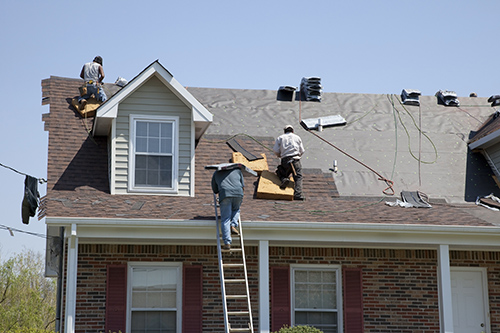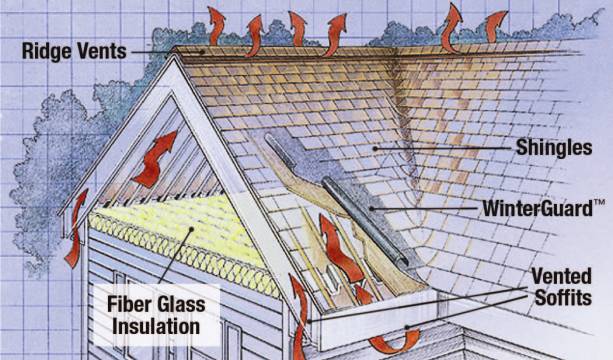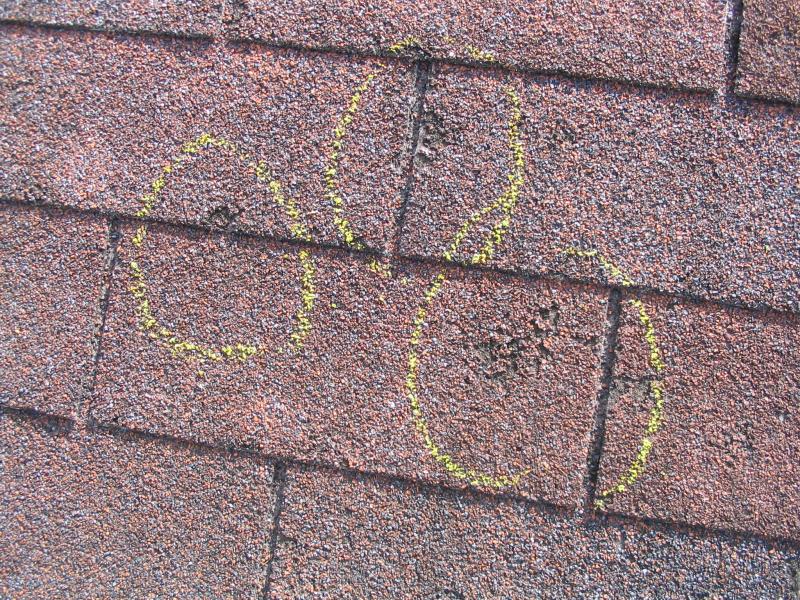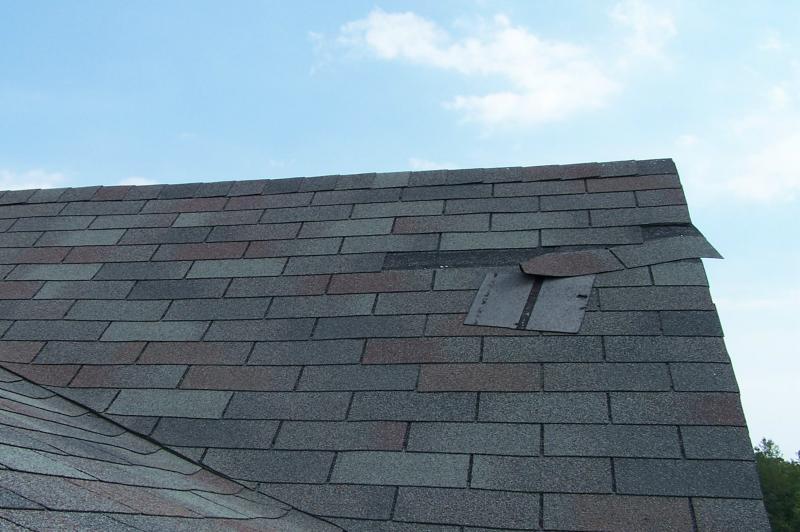- Roofing
- Siding
- Gutters
- General Services
- Insurance Claims
- Color Viewer
- Testimonials
- Photos
- Credentials
- Contact Us
Roofing 101

Replacing your roof, whether a single family home, a multi-unit residential complex, or a commercial building is one of the most critical financial decisions you will make regarding your dwelling. While price is a factor, it should not be the deciding factor. There is always a trade-off between price and quality.
It is very important to know what standards you are buying, what you are receiving in terms of materials and workmanship, as well as the assurance of knowing the service extends after the work is completed. The most critical financial decisions you will make regarding your dwelling. Choosing the right professional roofing contractor can make the difference in both the process and the results. Hopefully, this information will make you a more knowledgeable consumer and, when the time comes, a smart roof system buyer.
Bosworth Roofing & Remodeling specializes in steep, low-slope, and flat roof replacement. Our professional team of roofing installers is committed to providing excellent service and a high quality finished product.
Steep and Low-Slope Roof System Components
All steep and low-slope roof systems (i.e., roofs with slopes of 25 percent or more) have five basic components:

- Roof covering: shingles, tile, slate or metal and underlayment that protect the sheathing from weather.
- Sheathing: boards or sheet material that are fastened to roof rafters to cover a house or building.
- Roof structure: rafters and trusses constructed to support the sheathing.
- Flashing: sheet metal or other material installed into a roof system's various joints and valleys to prevent water seepage.
- Drainage: a roof system's design features, such as shape, slope and layout that affect its ability to shed water.
Choosing a Roof System
There are a number of things to consider when selecting a new roof system. Of course, cost and durability head the list, but aesthetics and architectural style are important, too. The right roof system for your home or building is one that balances these five considerations. The following roofing products are most commonly used for steep-slope structures.
Asphalt shingles possess an overwhelming share of the U.S. steep-slope roofing market and can be reinforced with organic or fiberglass materials. Although asphalt shingles reinforced with organic felts have been around much longer, fiberglass-reinforced products now dominate the market.
- Organic shingles consist of a cellulose-fiber (i.e., wood) base that is saturated with asphalt and coated with colored mineral granules.
- Fiberglass shingles consist of a fiberglass mat, top-and-bottom layers of asphalt, and mineral granules.
Asphalt shingles' fire resistances, like most other roofing materials, are categorized by Class A, B or C. Class A signifies the most fire-resistant; Classes B and C denote less fire resistance. Generally, most fiberglass shingles have Class A fire ratings, and most organic shingles have Class C ratings.
A shingle's reinforcement has little effect on its appearance. Organic and fiberglass products are available in laminated (architectural) grades that offer a textured appearance. Zinc or copper-coated ceramic granules also can be applied to organic or fiberglass products to protect against algae attack, a common problem in warm, humid parts of the United States. Both types of shingles also are available in a variety of colors.
Regardless of their reinforcing type and appearance, asphalt shingles' physical characteristics vary significantly. When installing asphalt shingles, NRCA recommends use of shingles that comply with American Society for Testing and Materials (ASTM) standards-ASTM D 225 for organic shingles and ASTM D 3462 for fiberglass shingles. These standards govern the composition and physical properties of asphalt shingles; not all asphalt shingles on the market comply with these standards. If a shingle product complies with one of these standards, it is typically noted in the manufacturer's product literature and on the package wrapper.
Slate is quarried in the United States in Vermont, New York, Pennsylvania and Virginia. It is available in different colors and grades, depending on its origin. Considered virtually indestructible, it is, however, more expensive than other roofing materials. In addition, its application requires special skill and experience. Many old homes, especially in the Northeast, still are protected by this long-lasting roofing material. Please Note: At this time, Bosworth Roofing & Remodeling does not replace nor repair slate roofing.
Flat Roof System Components
The components of flat roof systems are very similar to the components of steep and low-slope except the roof covering consists of a rubber membrane and fiberboard that protects the sheathing from weather. The other 4 components are the same.
Ventilation and Insulation Are Key
One of the most critical factors in roof system durability is proper ventilation. Without it, heat and moisture build up in an attic area and combine to cause rafters and sheathing to rot, shingles to buckle, and insulation to lose its effectiveness.
Therefore, it is important never to block off sources of roof ventilation, such as louvers, ridge vents or soffit vents, even in winter. Proper attic ventilation will help prevent structural damage caused by moisture, increase roofing material life, reduce energy consumption and enhance the comfort level of the rooms below the attic.
In addition to the free flow of air, insulation plays a key role in proper attic ventilation. An ideal attic has:
- A gap-free layer of insulation on the attic floor to protect the house below from heat gain or loss.
- A vapor retarder under the insulation and next to the ceiling to stop moisture from rising into the attic.
- Enough open, vented spaces to allow air to pass in and out freely.
- A minimum of 1 inch between the insulation and roof sheathing.
- The requirements for proper attic ventilation may vary greatly, depending on the part of the United States in which a home or building is located, as well as the structure's conditions, such as exposure to the sun, shade and atmospheric humidity. Nevertheless, the general ventilation formula is based on the length and width of the attic. NRCA recommends a minimum of 1 square foot of free vent area for each 150 square feet of attic floor—with vents placed proportionately at the eaves (e.g., soffits) and at or near the ridge.
Even Roofs Have Enemies
A roof system's performance is affected by numerous factors. Knowing about the following will help you make informed roof system buying decisions:
- Sun: Heat and ultraviolet rays cause roofing materials to deteriorate over time. Deterioration can occur faster on the sides facing west or south.
- Hail: According to the Federal Alliance for Safe Homes, hail causes more than $1.6 billion worth of damage in an
 average year to residential roofs in the United States, making it, year in and year out, one of the most costly natural disasters. After a hail storm it can be hard for the untrained eye to see the damage to the shingles, so it is important to have a professional do a thorough inspection.
average year to residential roofs in the United States, making it, year in and year out, one of the most costly natural disasters. After a hail storm it can be hard for the untrained eye to see the damage to the shingles, so it is important to have a professional do a thorough inspection.- Rain: When water gets underneath shingles, shakes or other roofing materials, it can work its way to the roof deck and cause the roof structure to rot. Extra moisture encourages mildew and rot elsewhere in a house, including walls, ceilings, insulation and electrical systems.
- Snow and Ice: Melting snow often refreezes at a roof's overhang where the surface is cooler, forming an ice dam. This blocks proper drainage into the gutter. Water backs up under the shingles (or other roofing materials) and seeps into the interior. During the early melt stages, gutters and downspouts can be the first to fill with ice and be damaged beyond repair or even torn off a house or building.
- Condensation: Condensation can result from the buildup of relatively warm, moisture-laden air. Moisture in a poorly ventilated attic promotes decay of wood sheathing and rafters, possibly destroying a roof structure. Sufficient attic ventilation can be achieved by installing larger or additional vents and will help alleviate problems because the attic air temperature will be closer to the outside air temperature
- Wind: High winds can lift shingles' edges (or other roofing materials) and force water and debris underneath them.
 Extremely high winds can cause extensive damage.
Extremely high winds can cause extensive damage. - Moss and Algae: Moss can grow on moist wood shingles and shakes. Once it grows, moss holds even more moisture to a roof system's surface, causing rot. In addition, moss roots also can work their way into a wood deck and structure. Algae also grows in damp, shaded areas on wood or asphalt shingle roof systems. Besides creating a black-green stain, algae can retain moisture, causing rot and deterioration. Trees and bushes should be trimmed away from homes and buildings to eliminate damp, shaded areas, and gutters should be kept clean to ensure good drainage.
- Trees and Leaves: Tree branches touching a roof will scratch and gouge roofing materials when the branches are blown by the wind. Falling branches from overhanging trees can damage, or even puncture, shingles and other roofing materials. Leaves on a roof system's surface retain moisture and cause rot, and leaves in the gutters block drainage.
- Missing or Torn Shingles: The key to a roof system's effectiveness is complete protection. When shingles are missing or torn off, a roof structure and home or building interior are vulnerable to water damage and rot. The problem is likely to spread-nearby shingles also are ripped easily or blown away. Missing or torn shingles should be replaced as soon as possible.
- Shingle Deterioration: When shingles are old and worn out, they curl, split and lose their waterproofing effectiveness. Weakened shingles easily are blown off, torn or lifted by wind gusts. The end result is structural rot and interior damage. A deteriorated roof system only gets worse with time-it should be replaced as soon as possible.
- Flashing Deterioration: Many apparent roof leaks really are flashing leaks. Without good, tight flashings around chimneys, vents, skylights and wall/roof junctions, water can enter a home or building and cause damage to walls, ceilings, insulation and electrical systems. Flashings should be checked as part of a biannual roof inspection and gutter cleaning.


